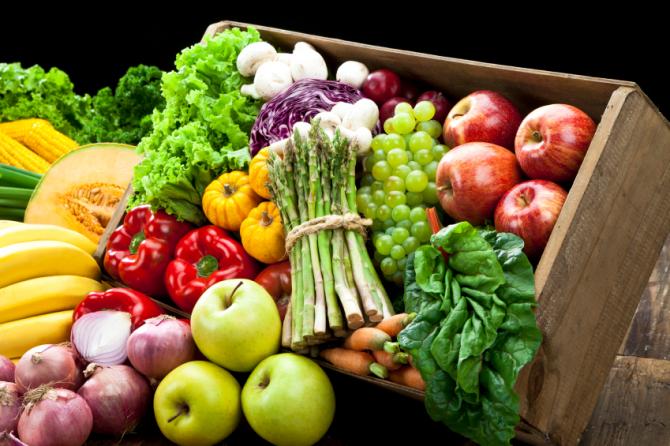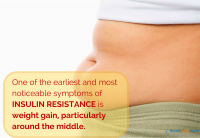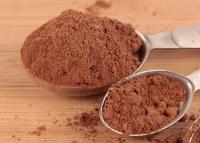
Some newly discovered compounds have just been found to turn off all of the genes that cause diabetes in just a few weeks.
Are these compounds found in a pill bottle? No!
Instead, you'll find them on your dinner plate - in rye bread and pasta.
I've explained before how to find out if you are pre-diabetic or diabetic. Half of the 24 million people with diabetes don't know they have it and nearly all the 60 million people with pre-diabetes don't know they have it.
Today, I want to share with you more information about what you can do NOW to prevent and reverse diabetes and pre-diabetes.
And rye bread isn't the only answer - I've got a lot more good advice, too.
The problem with diabetes drugs & treatments
But first I want to emphasize new research that should be headlines news but never saw the light of day. Do our current drugs treatments for diabetes actually work to prevent heart attacks and death?
Surely lowering blood sugar in diabetics is an effective strategy for reducing the risk of death and heart disease. It would seem obvious that if diabetes is a disease of high blood sugar, then reducing blood sugar would be beneficial.
However elevated sugar is only a symptom, not the cause of the problem. The real problem is elevated insulin unchecked over decades from a highly refined carbohydrate diet, a sedentary lifestyle and environmental toxins.
Most medications and insulin therapy are aimed at lowering blood sugar through increasing insulin. In the randomized ACCORD trial of over 10,000 patients, this turns out to be a bad idea.
In the intensive glucose-lowering group, there were no fewer heart attacks, and more patients died. Yet we continue to pay $174 billion annually for this type of care for diabetes, despite evidence that lifestyle works better than medications.
We also pay for cardiac bypass and angioplasty in diabetics when evidence shows no reduction in death or heart attacks compared to medication.
So now that we know what doesn't work, let me review what does work.
Dietary recommendations to reverse diabetes
Eating in a way that balances your blood sugar, reduces inflammation and oxidative stress, and improves your liver detoxification is the key to preventing and reversing insulin resistance and diabetes.
This is a way of eating that based on a whole foods diet that's high in fiber, rich in colorful fruits and vegetables, and low in sugars and flours, with a low glycemic load.
It is a way of eating that includes anti-inflammatory, antioxidant, and detoxifying foods. It includes plenty of omega-3 fats and olive oil, soy products, beans, nuts, and seeds.
All these foods help prevent and reverse diabetes and insulin resistance. This is the way of eating than turns on all the right gene messages, promotes a healthy metabolism, and prevents aging and age-related diseases like diabetes and heart disease.
Here are more specifics.
Meal Timing
Eat protein for breakfast every day, such as whole omega-3 eggs, a soy protein shake, or nut butters
Eat something every 4 hours to keep your insulin and glucose levels normal
Eat small protein snacks in the morning and afternoon, such as a handful of almonds
Finish eating at least 2 to 3 hours before bed. If you have a snack earlier in the day, you won't be as hungry, even
if you eat a little later
Meal Composition
Controlling the glycemic load of your meals is very important
You can do this by combining adequate protein, fats, and whole-food carbohydrates from vegetables, legumes, nuts, seeds, and fruit at every meal or snack
It is most important to avoid eating quickly absorbed carbohydrates alone, as they raise your sugar and insulin levels
Travel Suggestions
Two handfuls of almonds in a zip-lock bag make a useful emergency snack. You can eat them with a piece of fruit. Remember, real food is the best.
Eat to reverse diabetes and pre-diabetes
Choose from a variety of the following real, whole foods:
Choose organic produce and animal products whenever possible.
Eat high-quality protein, such as fish - especially fatty, cold-water fish like salmon, sable, small halibut, herring, and sardines - and shellfish.
Cold-water fish such as salmon, halibut, and sable contain an abundance of beneficial essential fatty acids, omega-3 oils that reduce inflammation. Choose smaller wild Alaskan salmon, sable, and halibut that are low in toxins. Canned wild salmon is a great "emergency" food.
Eat up to eight omega-3 eggs a week.
Create meals that are high in low-glycemic legumes such as lentils, chickpeas, and soybeans (try edamame, the Japanese soybeans in a pod, quickly steamed with a little salt, as a snack). These foods slow the release of sugars into the bloodstream, which helps prevent the excess insulin release that can lead to health concerns like obesity, high blood pressure, and heart problems.
Eat a cornucopia of fresh fruits and vegetables teeming with phytonutrients like carotenoids, flavonoids, and polyphenols, which are associated with a lower incidence of nearly all health problems, including obesity and age-related disease.
Eat more low-glycemic vegetables, such as asparagus, broccoli, kale, spinach, cabbage, and Brussels sprouts.
Berries, cherries, peaches, plums, rhubarb, pears, and apples are optimal fruits. Cantaloupes and other melons, grapes, and kiwifruit are suitable; however, they contain more sugar. You can use organic frozen berries (such as those from Cascadian Farms) in your protein shakes.
Focus on anti-inflammatory foods, including wild fish and other sources of omega-3 fats, red and purple berries (these are rich in polyphenols), dark green leafy vegetables, orange sweet potatoes, and nuts.
Eat more antioxidant-rich foods, including orange and yellow vegetables, dark green leafy vegetables (kale, collards, spinach, etc.), anthocyanidins (berries, beets, grapes, pomegranate), purple grapes, blueberries, bilberries, cranberries, and cherries. In fact, antioxidants are in all colorful fruits and vegetables.
Include detoxifying foods in your diet, such as cruciferous vegetables (broccoli, kale, collards, Brussels sprouts, cauliflower, bok choy, Chinese cabbage, and Chinese broccoli), green tea, watercress, dandelion greens, cilantro, artichokes, garlic, citrus peels, pomegranate, and even cocoa.
Season your food with herbs such as rosemary, ginger, and turmeric, which are powerful antioxidants, anti-inflammatories, and detoxifiers.
Avoid excessive quantities of meat. Eat lean organic or grass-fed animal products, when possible. These include eggs, beef, chicken, pork, lamb, buffalo, and ostrich. There are good brands at Whole Foods and other local health-food stores (also see mail order sources).
Garlic and onions contain antioxidants, enhance detoxification, act as anti-inflammatories, and help lower cholesterol and blood pressure.
A diet high in fiber further helps to stabilize blood sugar by slowing the absorption of carbohydrates and supports a healthy lower bowel and digestive tract. Try to gradually increase fiber to 30 to 50 grams
Watch Video




